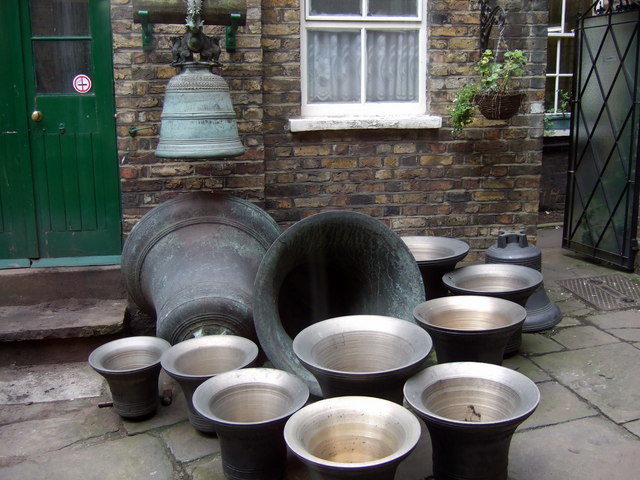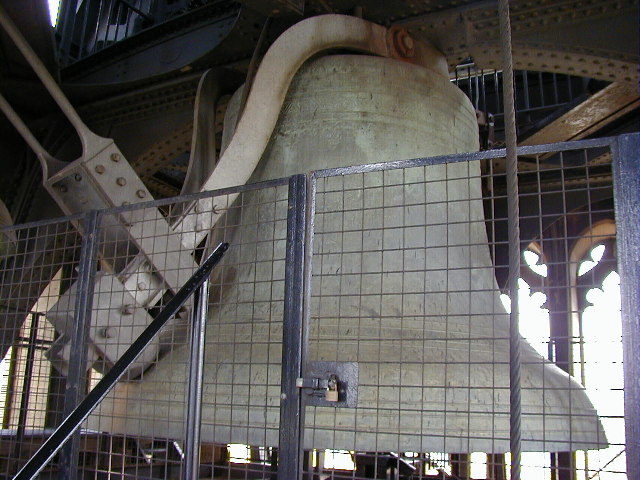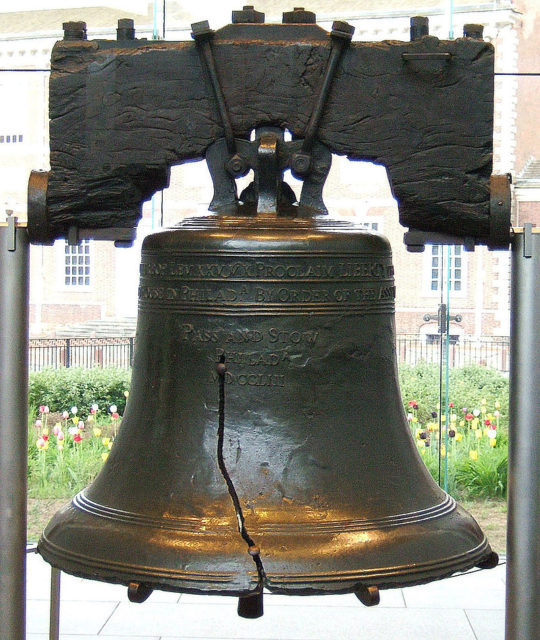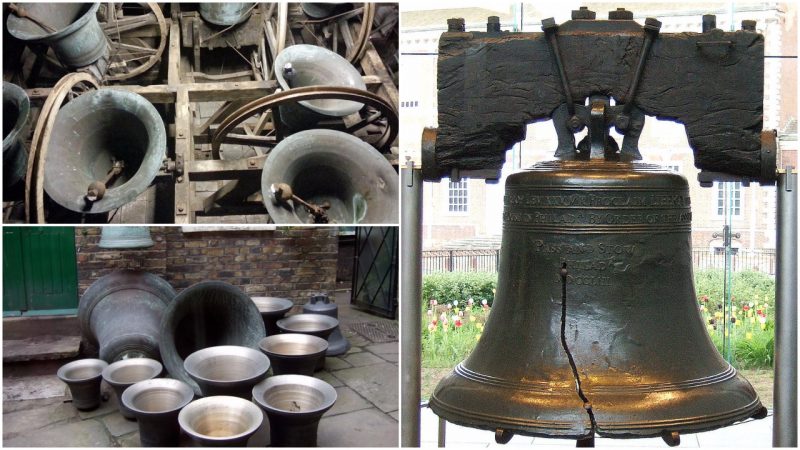The Whitechapel Bell Foundry is a bell foundry in Whitechapel in the London Borough of Tower Hamlets, and is the oldest manufacturing company in Great Britain.
The foundry’s main business is the bell founding and manufacture of church bells and their fittings and accessories, although it also provides single tolling bells, carillon bells and handbells. The foundry is notable for being the original manufacturer of the Liberty Bell, a famous symbol of United States independence.

The company dates back to 1570. The present premises on Whitechapel Road and Plumbers Row dates from 1670 and was formerly a coaching inn called “The Artichoke” which ceased trading in 1738. The following year, the Whitechapel Bell Foundry moved in and occupied the site to the present day.
In 1752 the foundry cast the Liberty Bell, which was commissioned to celebrate the 50th anniversary of William Penn’s 1701 Charter of Privileges, Pennsylvania’s original constitution.
As a result of damage sustained during its stormy passage across the Atlantic, the bell cracked in 1846 when it was first rung to mark the birthday of George Washington. Since 2003, the bell has been housed at the Liberty Bell Center near Independence Hall.

Big Ben, which tolls the hour at the Palace of Westminster, was cast in 1858 and rung for the first time on 31 May 1859. “Big Ben” weighs 13½ tons and is the largest bell ever cast at the foundry. This bell also cracked because the hammer that was initially used was too heavy.
The crack and the subsequent repair work gives Big Ben its present distinctive tone. A profile template of Big Ben surrounds the entrance door of the Whitechapel Foundry, while the original molding gauge is retained near the furnaces.
Whitechapel supplied the peal of 10 bells (later augmented to 12) for Guildford Cathedral in Surrey in the years following the Second World War, recast and augmented the bells of Canterbury Cathedralto a peal of 14 in 1981, and for the National Cathedral in Washington DC in 1964.
The foundry produced “Great Tom” at Lincoln Cathedral, the “Clock Bells” at St Paul’s Cathedral, the bells of Westminster Abbey and the 13 bells located at Liverpool’s Anglican cathedral which are notable for being the heaviest change-ringing peal of bells in the world, and where the bellfounder Albert Hughes is commemorated in a stained glass window in the nave.

Many churches across the world have bells cast by the Whitechapel Bell Foundry, including: Armenian Church, Chennai; St Dunstan’s, Mayfield; St Dunstan’s, Stepney; St Mary-le-Bow, Cheapside; St. Michael’s Church, Charleston; St Michael’s, Beckwithshaw; St Stephen’s Anglican Church, Newtown and St Philip’s Church.
The Whitechapel Bell Foundry designed the Olympic Bell seen at the opening ceremony for the London 2012 Olympic Games, although it was not cast on the premises. The furnaces at Whitechapel could not provide the 23 tons of molten metal required to make the bell, so it was manufactured at a factory in the Netherlands which normally produces ship’s propellers.
The Foundry also cast the Royal Jubilee Bells used on the lead barge for the Thames Diamond Jubilee Pageant in June 2012,which now hang in the church of St James Garlickhythe. Thomas Mears II cast the bell for Herne Bay Clock Tower in 1837.
